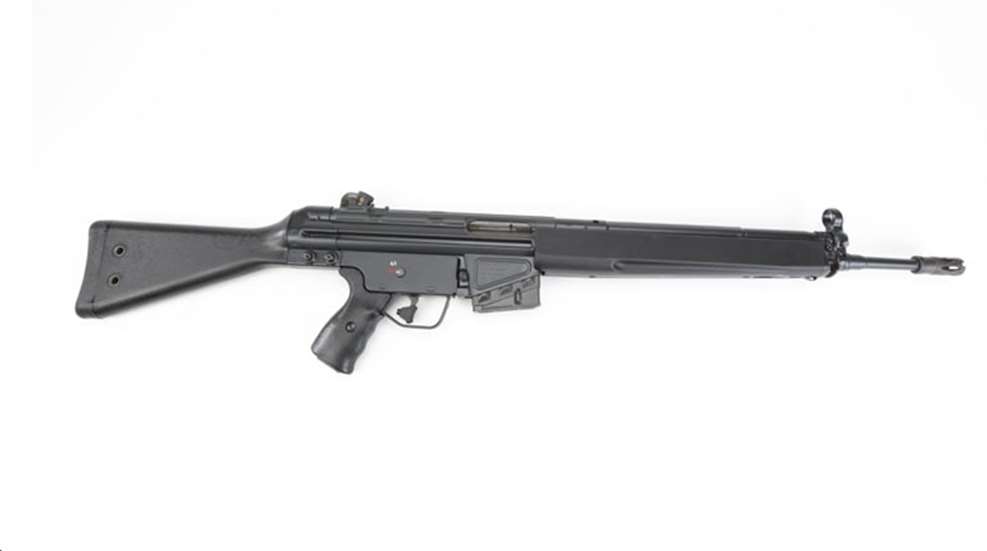
Top: Heckler & Koch Model 91 semi-automatic rifle; NRA Museums image
A war is similar to a forest fire. When it has run its course, it leaves behind a tattered skeleton of broken infrastructure and torn-apart people. And while the destruction may be ugly and devastating, often what grows from the ashes can be remarkably fresh and new. In the forest, new plant growth that will feed newer crops of wildlife. Closer to civilization, new businesses spring up, spawning growth, new homes and seemingly boundless opportunities for success.
So after Germany's defeat in World War II its people began another round of improvements that they hoped would allow them to compete on the world stage. German manufacturing has enjoyed a long reputation for producing quality products made to exacting precision. As far back as America's Colonial times it was the German gunsmiths who developed the effective and elegant Pennsylvania flintlock rifles based upon the jaeger gewehrs from their vaterland. Relentless bombing of the Waffenfabrik Mauser AG factory at Oberndorf, along with the systematic dissolution of the factory and its records by French occupation forces, had destroyed the famous firearms and ammunition manufacturer.
G3A3 Wikipedia image
Three former Mauser engineers, Edmund Heckler, Theodor Koch and Alex Seidel, salvaged what they could and in 1948 opened a machine tool plant on the old Mauser site. A year later the company registered its name—Heckler & Koch GmbH (H&K)—and began producing bicycles, sewing machine parts and other precision tools. When West Germany put out a bid request for a new rifle for its German Federal Army, H&K responded with its version of the Spanish CETME rifle.
Though built in and primarily for Spain, the CETME was actually a German design led by Ludwig Vorgrimler, an engineer with some history at Krupp and Mauser. This rifle’s design roots are in the StG45(M) and the French AME 49 sturmgewehrs, which were chambered for the 7.92 x 33 mm Kurz and .30 Carbine cartridges, respectively. However, the CETME Model A was configured as a battle rifle, chambered for the 7.62 x 51 mm CETME cartridge, a round slightly less powerful than the 7.62 x 51 mm NATO round. Its lockup system is wrapped around a roller-delayed blowback system whereby the bolt has a pair of rollers crammed into corresponding recesses in the barrel just behind the chamber. The rollers are held in placed by spring tension applied to a tapered locking piece within the bolt. As the chamber pressure works against the bolt, the tapered locking piece retards the bolt velocity by delaying its engagement with the rollers. When the locking piece has moved rearward enough, the rollers are compressed into the bolt body, freeing the bolt to move rearward and cycling the action.
Original G3 variant with older style flip up sights and wooden furniture. Wikipedia image.
This delayed-roller blowback operation was first seen in the Mauser Gerät 06H, a prototype sturmgewehr developed in the latter months of the war. Though some early prototypes featured a gas piston, the CETME and other rifles and submachine guns built around the principal do not use a piston or operating rod. Delayed-roller-blowback guns are lighter than corresponding gas-operated arms, but initially they had a problem with cases sticking in the chambers, thus tearing off extractors. The CETME addressed this issue by machining horizontal flutes in the chamber. These flutes allow some combustion gases to flow rearward and jolt the case enough to free it for otherwise normal extraction and ejection. By the way, although the fired cases look terrible, they can be cleaned and reloaded.
The powers within the West German government insisted that the new rifle be chambered for a NATO round so CETME with input from H&K produced a Model B that operated in the NATO round’ power curve and featured refinements such as the capability of being fired from a closed bolt in either semi-auto or full-auto mode, a longer barrel with a 22 mm rifle grenade launcher guide and a sheet metal fore-end that was perforated to allow air to cool the barrel.
West Germany wanted its rifles made in Germany, and after some complex negotiations the manufacturing rights for the G3 (Gewehr 3) rifle were awarded to H&K and Rheinmetall, a West German defense contractor. Rheinmetall, gave up its manufacturing rights for the G3 rifle in 1969.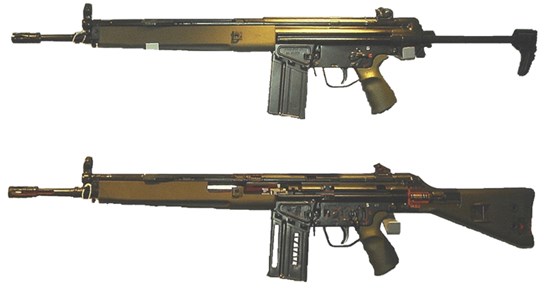
The G3A4 (top) and G3A3 (bottom). Wikipedia images.
Early production samples featured a flip-up rear sight with two apertures, a wooden buttstock—except for the metal telescoping stock version—and a folding bipod that nestled into a stamped sheet steel fore-end. Later versions replaced the flip-up sight with a rotating diopter sight with a V-notch zeroed with ball ammo to 100 meters and three successive apertures pre-zeroed for 200, 300 and 400 meters, successively. What would become the G3A3 with a fixed stock had the wooden one replaced with a more ergonomically designed stock of polymer. The telescoping stock—G3A4—was given some minor improvements, as well. Still later the integrally mounted bipod would be replaced with one that could be removed, and the fore-end was changed to polymer with an aluminum heat shield in the barrel channel. The G3 and virtually all of its many variants also feature a cocking lever on the left side of the receiver that does not reciprocate when the rifle is fired.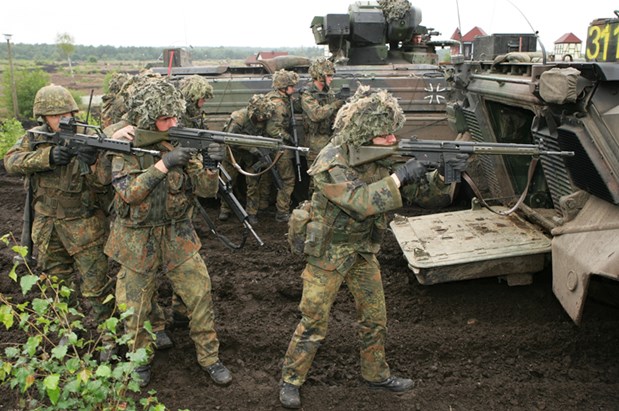
Bundeswehr soldiers armed with G3A3A1 and G36 rifles in 2010. Wikipedia image
As with many German firearms, the H&K G3 enjoyed a lot of popularity, primarily because it worked in so many tough conditions. It is said by some that the dirtier it gets, the more reliable it becomes. More than 40 countries adopted the G3 rifle for their military needs, from Afghanistan to Zimbabwe. Several of these countries, like Norway and Sweden, were licensed and produced copies and variants of the G3 rifle for their military.
Other variants include the G3SG with a STANAG claw mounted Schmidt & Bender 3-12x50 PM II telescopic sight. This variation is often used in sniping or designated marksman situations. Other designated marksman variations include the G3A3ZF, G3SG/1, MSG3 (semi-auto only), PSG1 (also semi-auto) and the MSG90, each differing in sights, as well as barrel configuration, for specialized sniping chores.
In 1963 H&K made a semi-automatic version of the G3, calling it the H&K41. Less than 400 of these were produced, and very few of these were imported to the United States. Most of those that made it into the U.S. were used as “donor” guns for full-auto conversion until the 1986 ban. By 1974 the issues with the H&K41 had required some re-engineering to make converting the rifle to selective fire much more difficult. At the time the terms “sporting rifle” and “military: or “paramilitary” were bantered about and often part of the political lexicon regarding whether the firearm was suited for civilian possession and use. The rifle was renamed H&K91 possibly to help it assume a more sporting rifle persona. Four variations of the ’91 were produced: HK91A2—with a fixed stock and semi-auto (SE or 0-1) trigger group; HK91A3—with a retractable 1-position stock and a semi-auto trigger group; HK91A4—with a fixed stock, semi-auto trigger group and a select polygonal bore; and the HK91A5—equipped with a retractable 1-position stock, semi-auto and polygonal-rifled bore.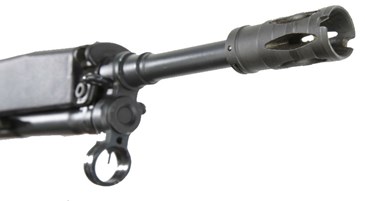
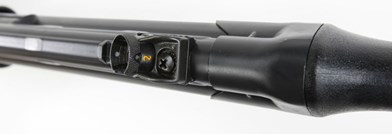
For a time, I had a HK91A4, along with a spare retractable stock. It was a very reliable rifle—I do not recall a single instance of a jam or misfire—equally accurate and easy to operate. On a couple of occasions I won some local matches in the “any other rifle” category. The diopter sight was pretty spot on with ball ammo or the equivalent handload, even out at 400 yards. I ended up trading it straight across for an 1895-vintage Model 1886 Winchester, and while I certainly made out well in terms of monetary value, there are times I wish I still had the German rifle.
Unfortunately, further import of the HK91 was prohibited under the George H.W. Bush administration, as well as several variants in 1989 by executive order. Today the HK91 can fetch from $1,500 to more than $4,000, depending on age, condition and the accessories. As a point of reference, in 1976 I paid $500 for my HK91A4, including the extra retractable stock, four 20-round magazines, an extra, more effective flash suppressor and an HK cleaning kit.
The HKG3/41/91 rifle family was, like most German products, extremely well designed and superbly executed. Target accuracy, utter reliability and reasonably portable in terms of weight; there was very little to criticize about it. But the hue and cry for lighter, easier-to-carry rifles seems to have won out in the modern rifle. Too bad. A featherweight 7.62 may be nice to carry, but when the shooting starts in earnest, most want a more substantial rifle.

































